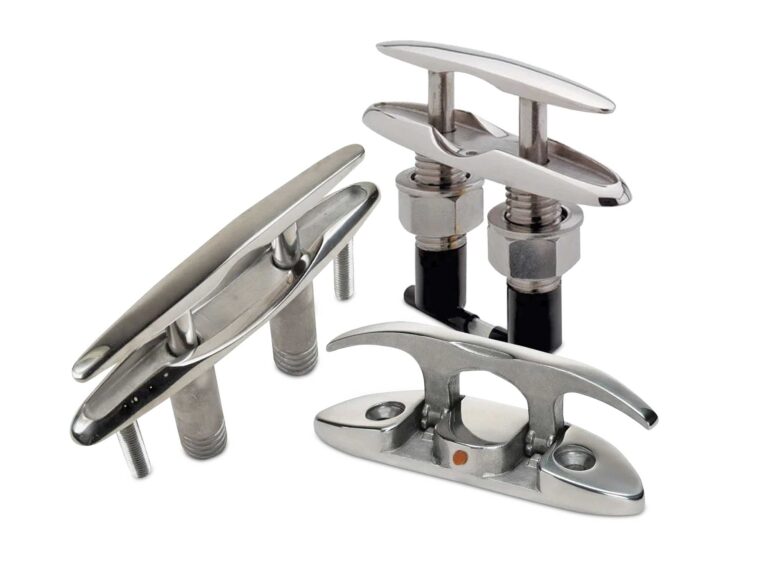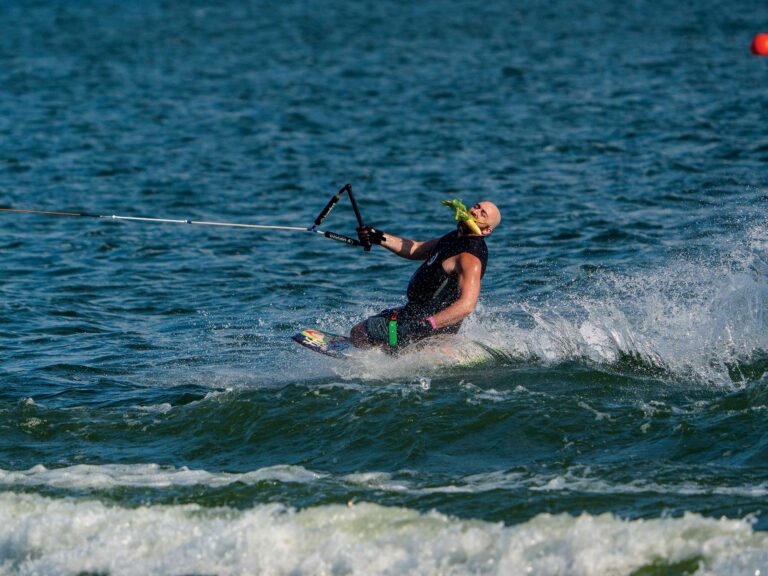The Ford Motor Co. wants to help tow your boat. Don’t believe me? Look at the 2001 Explorer Sport Trac, the most creative union of an SUV and a pickup I’ve ever seen. Up front sits a four-door cabin that seats five. In back, is a convenient (but short) cargo box – a great place for fishing gear, fuel tanks, or skiing equipment. Mounted on each side of the box are three tie-down cleats to show the world that you’re a powerboater and proud of it.
The Sport Trac is substantially different from the Explorer, which has been the best-selling SUV for nearly a decade. The Sport Trac has a longer, stiffer frame, tougher body mounts, larger front brake rotors, and a cargo bed made primarily of – get this! – fiberglass-reinforced plastic. Say goodbye to dents, dings, rust, and bedliners. The tailgate and rearmost box pillars are still built with steel, however. A clever device called the Cargo Cage is attached to the back of the box. Flip it forward and it fences off the cargo box’s rear two feet. Or, drop the tailgate, flip the cage back, and stretch the 50″ bed to twice its size.
This isn’t the the only cool feature Ford designed. Rather than carpet, the interior is floored with a washable rubber material that won’t swallow sand. Lush berber carpet floor mats lie atop the rubber. There’s also a power-operated rear window, and the rear seats fold down to reveal two hidden storage compartments. A 12-volt electrical outlet sits in the side wall of the Sport Trac’s 29.6-cubic-foot cargo bed, and a hinged cover is available to lock and protect all your goodies lying inside. Did somebody say, “Hit the beach!”?
I hitched a 21-foot Sea Ray Sundeck to a Trail Rite tandem-axle trailer for BOATING’s tow test. That rig weighed 4,690 pounds. The Sport Trac’s tow rating is 5,040 pounds.
Although it lacks the sheer guts of a V-8, Ford’s 205-hp V-6 easily keeps pace with traffic. Its five-speed automatic transmission never leaves you waiting for the tach needle to climb very far into its high range before shifting.
At a Newport Beach, California, launch ramp, I discovered that I needed to use the Sport Trac’s four-wheel drive to pull my rig out of the water. One twist of a knob on the dash easily shifts this truck into four-wheel drive; a second twist selects low range. Electronic driveline controls allow you to shift in and out of four-wheel drive while underway.
One trait I observed during my test drive along the Pacific Coast was a tendency for the truck and trailer rig to undulate over bumps. Ford’s chassis engineers had calibrated the Sport Trac’s absorbers for a cushy-soft ride, but they say they’re considering firmer settings to counter this tendency.
| MODEL | Ford Explorer Sport Trac |
| Engine | 4.0-liter SOHC V-6 |
| Net hp/rpm | 205/5250 |
| Net torque (ft-lb/rpm) | 240/4750 |
| Transmission | 5-speed automatic |
| Front suspension | control arms, torsion bars |
| Rear suspension | rigid axle, leaf springs |
| Wheelbase (in.) | 125.9 |
| Length (in.) | 205.9 |
| Width (in.) | 71.8 |
| Height (in.) | 70.1 |
| Brakes (front/rear) | disc/drum; standard 4-wheel ABS |
| Tires | Firestone Wilderness AT, P25570SR-16 |
| Curb weight (lbs.) | 4,400 |
| Towing capacity (lbs.) | 5,040 |
| Cargo capacity (min.-max. cu. ft.) | 29.6 |
| Fuel capacity (gal.) | 20.5 |
| Estimated city/highway towing fuel economy (mpg. avg.) | 8 |
| Price (as tested, estimated) | $31,405 |
LAST WORD. Ford’s new Explorer Sport Trac may be the most versatile medium-duty tow machine ever invented.









